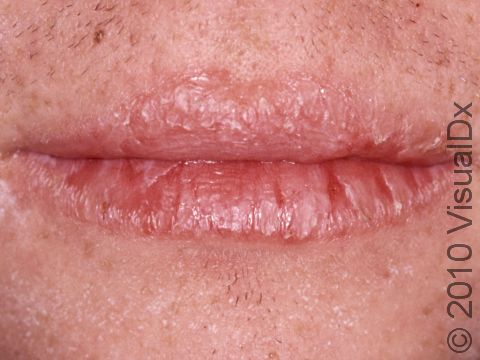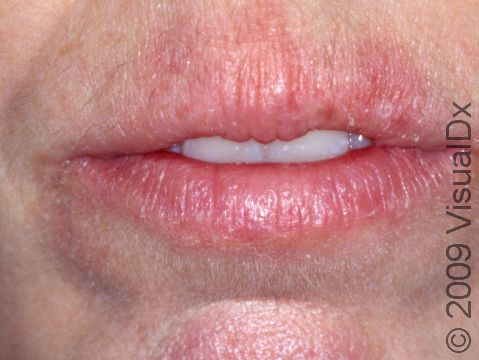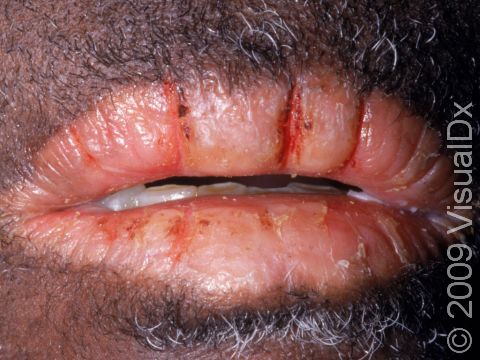Chapped Lips (Cheilitis)
Chapped lips (cheilitis) are lips that appear dry, scaly, and may have one or more small cracks (fissures). Often, the lips are sensitive, and there may or may not be redness (erythema) and swelling (edema) present. Retinoids (isotretinoin and acitretin) are the most frequent drug-induced causes for chapped lips. Other drugs reported to have induced chapped lips include:
- High doses of vitamin A
- Lithium
- Chemotherapeutic agents (busulfan and actinomycin)
- D-penicillamine
- Isoniazid
- Phenothiazine
Other possible causes of chapped lips include high fevers as well as environmental conditions, such as cold weather, dehydration, and certain vitamin deficiencies.
Who's At Risk?
Chapped lips may be seen in people of all ages. However, lip-licking cheilitis is usually seen in 7–15 year olds and is typically seen as a scaling, pink band around the mouth.
Signs & Symptoms
Chapped lips involves scaling (with or without fissures) and mild to moderate swelling of the lips.
Self-Care Guidelines
To treat chapped lips:
- Discontinue use of the causing medications, if possible.
- If medications cannot be discontinued, apply petroleum jelly as often as needed.
- Avoid lip licking because this will only worsen the condition.
- Avoid “medicated” lip preparations because they increase the risk of developing an allergic reaction.
Treatments
Lip-licking cheilitis is best treated with avoidance of the licking behavior. Drug-induced cheilitis is treated with avoidance of the offending drug, but if this is not possible, frequent application of petroleum jelly may help ease lip pain and irritation.
Visit Urgency
See your primary care physician or dermatologist if you notice persistent scaling of the lips.
Trusted Links
References
Bolognia, Jean L., ed. Dermatology, pp.1090-1091. New York: Mosby, 2003.
Freedberg, Irwin M., ed. Fitzpatrick’s Dermatology in General Medicine. 6th ed, pp.698. New York: McGraw-Hill, 2003.
Last modified on October 10th, 2022 at 4:21 pm

Not sure what to look for?
Try our new Rash and Skin Condition Finder




